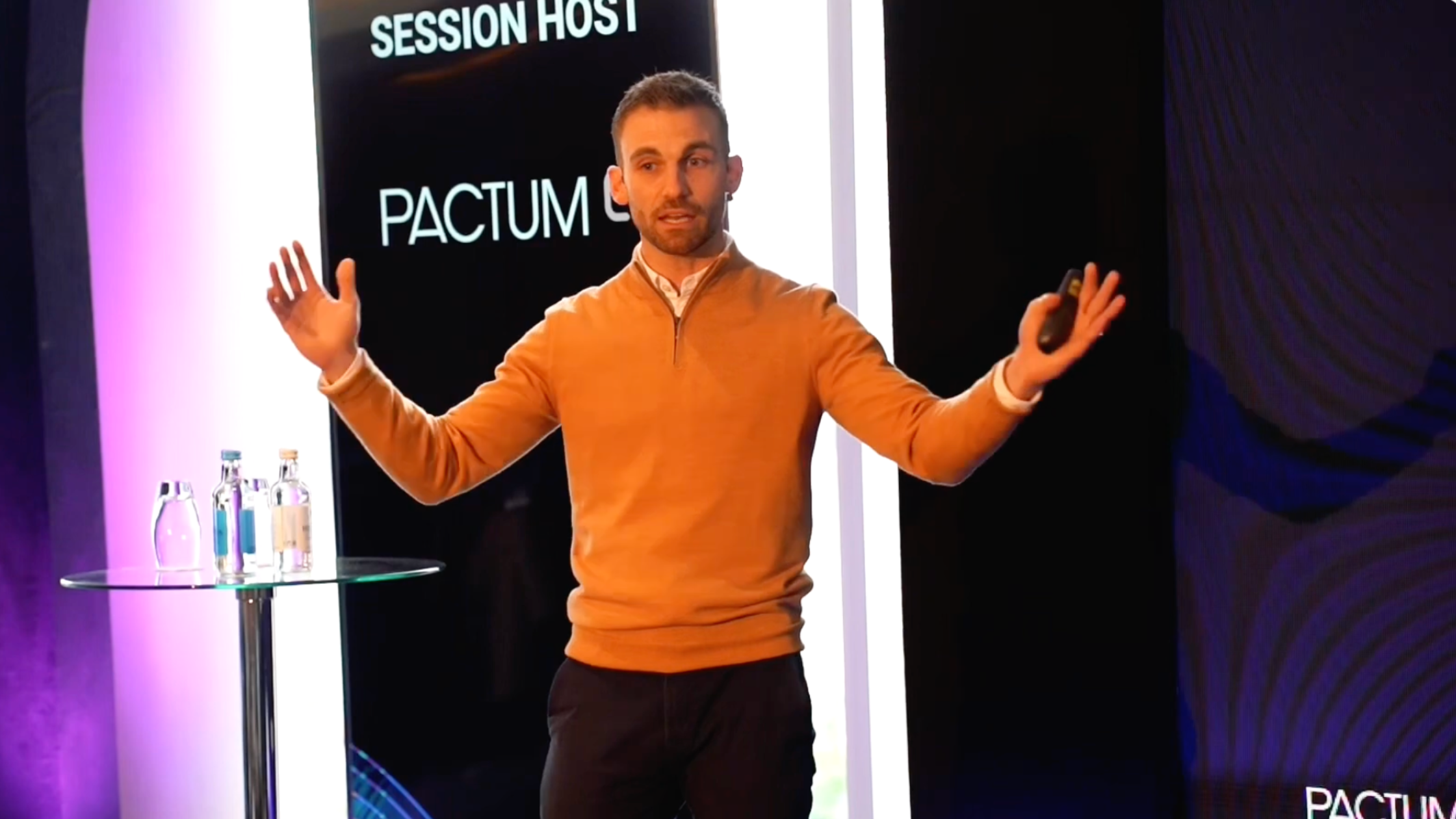Dan Tunnicliffe's 6 top tips for managing autonomous negotiations in procurement
"You don't just press go on an autopilot", Dan explained to procurement leaders at the recent World Procurement Congress.

AI is like autopilot - but not in the way many people think, explained procurement expert Dan Tunnicliffe at the recent World Procurement Congress 2024 in London.
"Think about it as, not operating the autopilot, but configuring the autopilot," he told the audience of procurement leaders.
"You're not now the one pressing go and sitting back and watching. Particularly when you're getting started with [autonomous agents], you need to think about it more deeply and understand how you're configuring the autopilot and how you want it to run. Sometimes people forget that."

Dan Tunnicliffe spent seven years in procurement at Rolls-Royce before six years at Coupa then joining Pactum to focus on autonomous negotiations, the topic that was high on many people's agenda at the World Procurement Congress.
Pactum CEO Martin Rand was also on stage explaining the science and principles behind autonomous negotiations, which is available to watch here on YouTube. On a separate stage, Adam Brown who heads up Procurement Strategy & Transformation at Maersk also talked about the transformational capabilities of autonomous negotiations for their business.
For those keen to learn best practices in autonomous negotiations based on the experience of Fortune 500 companies, here's the video and an overview below.
1. Earn your internal mandate.
Your first - and often biggest - hurdle is going to be your internal stakeholders. There will be plenty of healthy scepticism about any new initiative involving AI, including within procurement teams, so change management is a crucial factor.
That's why it's important to first demonstrate clear results from a low risk introduction. For that, Dan recommends first deploying autonomous negotiations on indirect, non-critical spend and with existing suppliers. You can also start with relatively simple negotiation goals, such as by reaching out to suppliers who may prefer to extend their working capital in return for early payment discounts.
The impact and any lessons learned can then be reviewed in a relatively short amount of time and then this AI initiative is no longer theoretical.
2. Improve your data hygiene.
Better data leads to better outcomes when using AI, but no company has perfect data so this fact shouldn't hold companies back from getting started and benefiting from AI.
Dan says we need to think about it as "data hygiene" because having good data is a continuous process, not a state of perfection, and autonomous negotiations can significantly contribute to this by collecting more information from suppliers.
To understand this more, it's worth listening to one more Dan.
Dan Calderwood is the CCO of Veritiv, a Fortune 500 company that first discovered autonomous negotiations when their customer, Wesco, used it with them. That means Veritiv now has experience of autonomous negotiations as both buyers and suppliers.
Speaking at the SIG Global Executive Summit in March, Dan explained that there is some basic data that needs tidying up around contact information of suppliers in order to proceed with autonomous negotiations, but Veritiv then used its negotiation bots to gather additional data from suppliers - ranging from just clarifying all existing terms to learning about sustainability and inclusion across their supply base in order to support corporate social responsibility goals.
3. Understand how you value your trade-offs.
Here's where Dan Tunnicliffe made the point that practitioners in autonomous negotiations need to consider how they configure the autopilot.
If you want to extract significant value from AI then don’t think your job is simply to press go on it. With autonomous negotiations, you are actively managing more supplier contracts than ever before and that requires higher level strategy.
You may have thousands of suppliers who were previously just getting standardized deals with cookie cutter terms. Now you can have thousands of simultaneous discussions with them to learn what terms they'd prefer and which also brings more value back to you too. For that, MESOs are key. These are multiple equivalent simultaneous offers that AI is particularly adept at calculating (and then re-calculating based on what the supplier values more).
Autonomous negotiations is based on rules-based AI so configuring the autopilot means setting the best possible parameters for your negotiation bots and ensuring they understand what you value and how much you value it in order to make good offers of equal value in which your suppliers can also find more value.
One example that Dan gives is whether it's worth trading ten days of payments terms for an extra month of warranty.
It's the kind of trade-off that you may have never previously considered, but you now have the capability to extract more value from these kind of considerations so you need to work with your wider internal stakeholders to place a value on them based on your own business circumstances.
4. Get into the shoes of your suppliers.
Remember that there's always a human on the other side of your autonomous negotiations (for now).
So preview your negotiations before they are sent out, get familiar with the negotiation flows, and spot check your data inputs are accurate. You have to think like the suppliers receiving your bots.
Any details that affect whether the supplier can do the job and at what cost should be already configured into the negotiations, otherwise you are going to get fewer choices of competitive offers or spend time answering questions from everyone.
Dan mentioned one recent example in which a company wanted to send out a negotiation that mentioned only the state in which the work needed to take place. Well, it happened to be a large state and it was pointed out that the exact location was a significant factor to the potential suppliers most likely to take on the work. By simply thinking like the supplier, a huge ton of work was saved.
5. Extend your bots by geographies, categories, and use cases.
When you've earned your internal mandate, you can then scale the benefits by extending the reach of your bots and bringing other parts of your business onboard.
Both Walmart and Maersk are among the companies that have spoken publicly about how they are gradually scaling autonomous negotiations far beyond their initial low risk introductions.
That includes now using multiple languages (with Spanish and Japanese two of the fastest growing languages for autonomous negotiations), as well as engaging direct, strategic spend too. Maersk, for example, uses autonomous negotiations for spot trucking rates, which form a core part of its integrated logistics.
“Nail it and scale it”, as Walmart explained in this Harvard Business Review study about its own strategy for autonomous negotiations.

6. Human collaboration matters now more than ever.
The success of AI initiatives, such as autonomous negotiations with suppliers, depends entirely on the humans managing it.
Human collaboration is essential, as supply chain expert professor David de Cramer explains.

Autonomous negotiations show how AI can augment human capabilities. That means human-bot collaboration to conduct those autonomous negotiations, bot-bot collaboration in the very possible near future, but also human-human collaboration to always make the most of this technology.
Procurement professionals shouldn't be left on their own in front of screens. To unlock the most value possible, we all need to discuss strategies more and share best practices. That's why the Autonomous Negotiations Academy was created.






